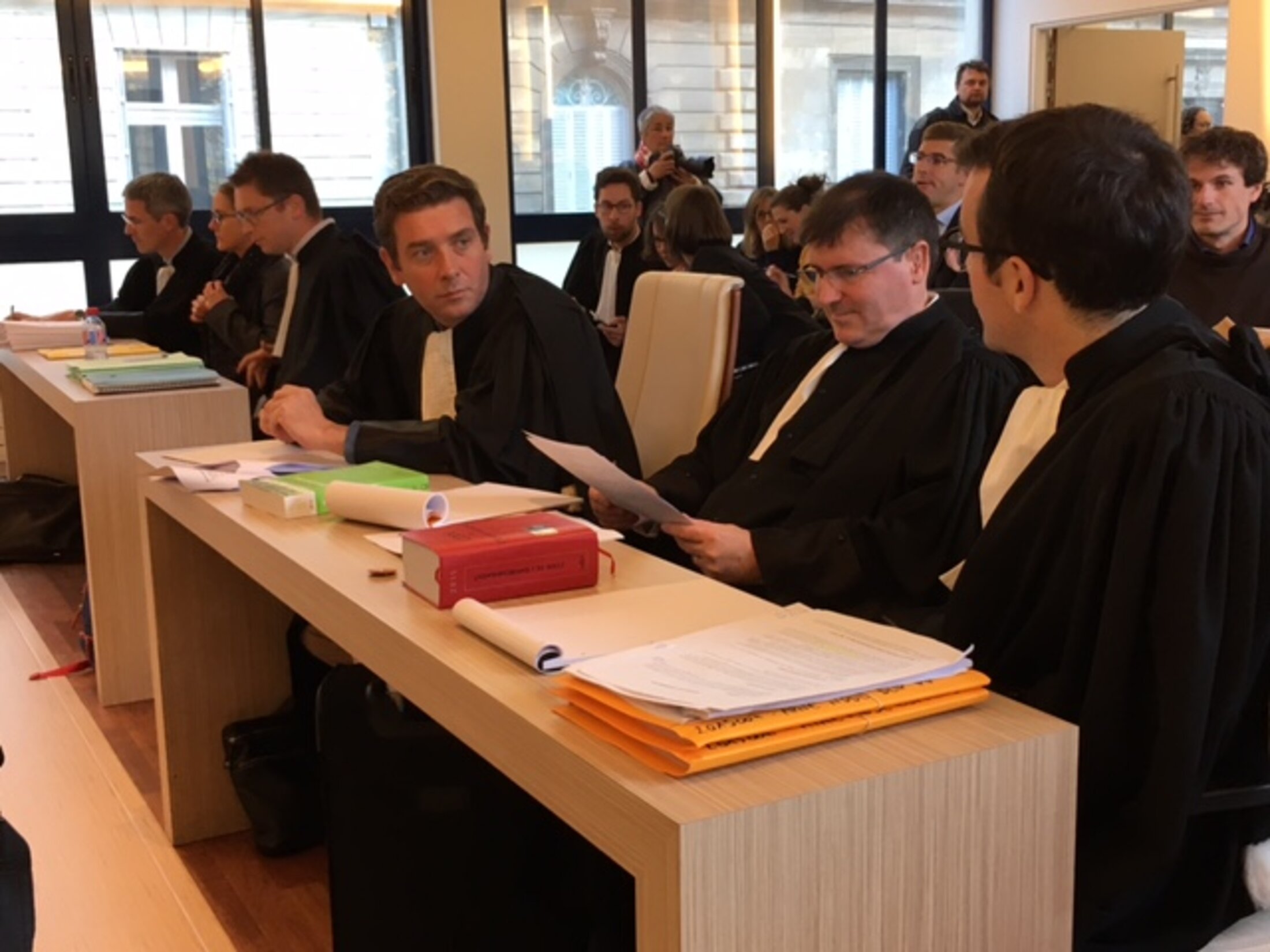"If people think that the public rapporteur can be influenced by pressure from the government, they do not know the public rapporteur,” said Christine Piltant, an independent examining magistrate who is called upon, as a rapporteur, to mediate in administrative disputes in the town of Nantes in north-west France.
Piltant, an examining magistrate who took on the job of mediating in contested public sector plans just two months ago, kept her word as she dealt a fresh blow to the 580-million- euro project to build a Great West Airport (Aéroport du Grand Ouest) on countryside about 25 kilometres north-west of Nantes.
The project is fiercely opposed by farmers facing eviction from the wetland site and militant ecologists who have long been occupying it, while Prime Minister Manuel Valls has just as ardently insisted it will go ahead and that construction work should begin before the end of the year.
But in a presentation lasting nearly four and a half hours last Monday, in a crowded, overheated courtroom at the Nantes administrative appeals court, Christine Piltant presented the legal arguments behind her ruling that four key prefectural decisions authorising work to start on the at Notre-Dame-des-Landes, near Nantes, should be annulled. The ruling by Piltant, who argued that developing the existing airport at Nantes was the best solution, has the potential of scuppering the project if a panel of magistrates endorse her conclusions in their own ruling due on November 14th.

Enlargement : Illustration 1

The controversial new Nantes airport was first mooted in 1963. It has faced unrelenting opposition since 1972 and which has intensified along with environmental concerns. The zone on which building is to start has been occupied by protesters since 2008, but the plan appeared finally set to go ahead after a local referendum voted in favour of the project in June this year.
However, in 2014 the European Commission questioned whether France had fulfilled its obligations to assess the full environmental impact of the entire plan, including building roads and transport infrastructure. It was this aspect that Piltant was involved in examining.
As the hearing got underway, another meeting kicked off at the Loire-Atlantique prefecture to inform local councillors on the next steps for work on the site.
For the project’s opponents, it was symptomatic of the way the issue has been managed by the authorities as the tensions have built up over recent years, whereby no opposition, not even from the judiciary, should be allowed to halt the plan.
The previous weekend French foreign affairs minister Jean-Marc Ayrault, the former mayor of Nantes who championed the project, vowed that the airport "will continue its route regardless of the vicissitudes". Reacting to Piltant’s ruling, former prime minister François Fillon, running to become the conservative Les Républicains party’s candidate in presidential elections next year, dismissed the public rapporteur's ruling as a "stitch-up operation".
No less than ten petitions [1] were brought before last Monday’s hearing. The first batch came from those who opposed the government's declaration that the planned road network for the airport was of public utility – it includes four lanes, bypasses and reorganisation of local roads.
The public rapporteur rejected these petitions one by one, while regretting that she had to do so. The impact of environmental destruction the plans would cause was "not to be neglected", she said, adding that her approval of the declaration of public utility was "more by [legal] discipline than by conviction".
Late in the afternoon, she dealt with five petitions seeking to annul prefectural decisions from December 2013 that authorised work to start on the site. They also sought to reverse an administrative court ruling which in July 2015 rejected the opponents' submission.
Piltant said she reached her decisions on this based on the 2006 Law on Water and Aquatic Habitats. At this point many opponents of the airport in the courtroom were smiling, convinced the public rapporteur would back their bid for an annulment.
Describing the site set aside for the airport some 40 years ago, an area of over 1,000 hectares of wetland draining into three river basins featuring 59 ponds, the magistrate said this designated airport construction zone "plays an important role for aquatic habitats and the ecosystem downstream".
The European Union framework directive on water calls on member states to oppose any project that could damage bodies of water. In this case, the public rapporteur said, rising temperatures, salinity and lack of oxygen were among the adverse effects on the area's water resources to be expected if the airport were to be built and operated. "The bio-geo-chemical functionalities of the platform would be impacted," she said.

Enlargement : Illustration 2

The contractor, AGO Vinci, proposes measures to compensate for this, but there is no guarantee that they will work. Above all, she said, "destruction is immediate while re-creating natural functions that have been lost can take decades". And, although the body of water under threat represents only 1.44% of the area that would be impacted, "if 1.44% of the French population contracted rabies, that would be a million people. No one would call that insignificant".
The courtroom fell silent at this. In the front row of the public benches, Julien Durand, a retired farmer who has long opposed the airport plan, began to smile. The contractor’s lawyer bit his nails.
There was, said Piltant, a "proven" alternative to building the airport: expanding the existing Nantes Atlantic Airport. Over the 40-odd years of to-ing and fro-ing over the Notre-Dames-des-Landes site, the government has never given credence to this hypothesis. But, she argued, a large number of airports around the world, handling at least as many passengers as the nine million forecast for Nantes, have only one runway, just like Nantes Atlantic.
The costs of each option are comparable – 825 million euros for expanding Nantes Atlantic and 794 million for building at Notre-Dame-des-Landes for a budgeted four million passengers. She conceded that the Nantes Atlantic site presented problems of sonic and environmental pollution. But she asked, "Can we live without an ideal airport? Yes. Can we live without water resources? No."
Once demonstrated that there is an alternative to building a new airport at Notre-Dame-des-Landes, the entire plan was placed in question. There is no justification for destroying the ecosystem, as according to an essential principle for protecting biodiversity, any environmental destruction must be avoided, reduced or compensated. The public rapporteur applied this same reasoning to the prefectural decisions authorising the destruction of protected species and ruled they should be annulled.
AGO Vinci's lawyer's claim that "the Notre-Dame-des-Landes project will improve the site's ecological state" manifestly failed to address the underlying arguments, and the representative of the environment ministry chose to make no comment. Environment minister Ségolène Royal has publicly criticised the project, favouring instead the development of the existing airport, much to the irritation of Prime Minister Manuel Valls.
Piltant’s critical view of the airport plan's environmental provisions ran against all previous recourses by opponents of the project which concluded with judgements favourable to the contractor. Administrative courts have tended to weigh the environmental damage of a project against the economic activity it can create, with the result that they frequently authorise work to start in the name of the "general interest". Christine Piltant's approach was to analyse whether environmental law had been given proper consideration.
Her ruling now goes before a panel of six judges brought together by the court's president, Gilles Bachelier, a State Councillor, who will announce their opinion of it on Monday. In practice, a public rapporteur's opinions are almost always approved by such a court.
If prefectural decisions relating to the law on water and protected species are thrown out, building work is no longer authorised to begin on the site. Therefore if the government decides to retain the new airport plan, it would have to begin a long administrative procedure yet again.
After the ruling, Guillaume Dalmard, of the association Des Ailes pour l’Ouest (Wings for the West), which supports the new airport plan, said everything was now in the lap of the judges. “The people voted for the plan,” he said. “That will be translated into fact.”
Yannick Jadot, who attended the hearing just before he was elected by the French Green party EELV to run as it presidential election candidate next year, said the rapporteur’s ruling would also prevent the evacuation of opponents occupying the site, known in French as a 'zone à défendre' (zone to defend), or ZAD. "It would be unimaginable to send the police in against the ZAD at the same time as the appeals court allows the issue to be put back on the right course."
-------------------------
1: The petitions before the hearing came from several associations, including Acipa (people living on or near the site) and Cédépa (existing and former elected representatives), and also from a handful of groups for the defence of the environment that have worked quietly for years to fight the airport plan on the legal front. They include France Nature Environnement, Bretagne Vivante, FNE Pays de la Loire, Eaux et Rivières de Bretagne, la Ligue de Protection des Oiseaux (LPO) and SOS Loire Vivante. Their members say they are not simply opponents of the airport but builders of public sector solutions in the service of the general interest.
- The French version of this article can be found here.
English version by Sue Landau
(Editing by Graham Tearse)


